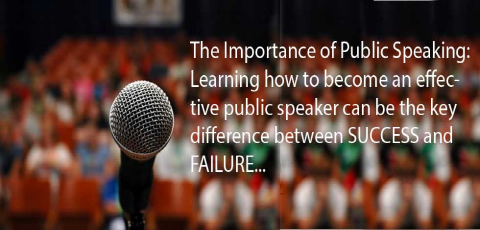
   |
[Speaking] (PS-020) 보다 나은 죽음의 방법, 건축가가 도울 수 있습니다 - Alison Killing
최고관리자 | 16-11-20 14:26

대중 연설은 아마도 단순한 언어의 기술적 구사가 아닌, 청중을 사로잡는 노력과 준비로
만들어진 언변(言辯)의 결과물이라 할 수 있을 것입니다. 명연설은 한 사람의 인생을 완전히
바꾸기도 하지요. 영어 공부에 있어서 가장 중요한 "듣고/이해"하는 능력을 꾸준히 배양하여
튼튼한 영어 실력을 기르길 바랍니다.
[TED 클릭]
[Transcript]
0:11
여러분에게 죽음과 건축에 대한 이야기를 하려고 합니다.
I'd like to tell you a story about death and architecture.
0:16
100년 전, 인간은 페렴같은 전염병으로 인해 죽곤했죠. 그러한 병에 걸리게되면, 우리의 목숨을 빠르게 앗아갔습니다. 우리는 주로 가족이 돌보는 집에서, 침대에 누워서 마지막 숨을 거뒀지만, 이 선택 밖에 없었습니다, 왜냐하면 많은 사람들에게 의료시설 부족했으니까요.
A hundred years ago, we tended to die of infectious diseases like pneumonia, that, if they took hold, would take us away quite quickly. We tended to die at home, in our own beds, looked after by family, although that was the default option because a lot of people lacked access to medical care.
0:32
그리고 20세기에는 많은 것이 변했습니다. 전염병을 치료하기 위해 페니실린같은 새로운 약을 만들었고, 엑스레이 기계처럼 새로운 의료기술도 발명되었습니다. 그것들은 너무 크고 비쌌기 때문에, 보관할 수 있는 넓고 집중화된 건물들이 필요했습니다. 그리고 그것은 현대 병원들이 됐죠.
And then in the 20th century a lot of things changed. We developed new medicines like penicillin so we could treat those infectious diseases. New medical technologies like x-ray machines were invented. And because they were so big and expensive, we needed large, centralized buildings to keep them in, and they became our modern hospitals.
0:50
세계 2차 대전 이후, 많은 나라들이 보편적 건강관리제도를 구축했습니다. 누구라도 치료가 필요하면 받을 수 있도록 하기위해서요. 그 결과로 세기 시작시 45세의 수명이 오늘날 2배로 증가하게 됐습니다. 20세기는 과학이 무엇을 해줄 수 있는지에 매우 낙관적이던 때였습니다. 하지만 사는것에 집중한 나머지 죽음은 잊혀졌고, 우리가 죽음을 대하는 방법마저 급격히 변했습니다.
After the Second World War, a lot of countries set up universal healthcare systems so that everyone who needed treatment could get it. The result was that lifespans extended from about 45 at the start of the century to almost double that today. The 20th century was this time of huge optimism about what science could offer, but with all of the focus on life, death was forgotten, even as our approach to death changed dramatically.
1:14
저는 건축가입니다. 그리고 지난 일년 반동안 저는 이 변화들을 보며 죽음과 죽는 것이 건축에게 어떤 의미인지도 살펴봤습니다. 우리는 주로 암과 심장병으로 죽습니다. 그 말은 즉, 많은 사람들이 만성질환을 오래 앓게 된다는 겁니다, 삶의 끝자락에서 말이죠. 그 기간 동안 우리는, 병원, 호스피스, 보호시설에서 많은 시간을 보낼 것입니다.
Now, I'm an architect, and for the past year and a half I've been looking at these changes and at what they mean for architecture related to death and dying. We now tend to die of cancer and heart disease, and what that means is that many of us will have a long period of chronic illness at the end of our lives. During that period, we'll likely spend a lot of time in hospitals and hospices and care homes.
1:37
그럼, 우리 모두다 현대 병원에는 가봤었죠. 형광등, 끝없는 복도와 수많은 불편한 의자들을 다들 아시죠. 병원 건축은 평판이 나쁩니다. 하지만 놀라운건, 항상 이렇지 않았습니다.
Now, we've all been in a modern hospital. You know those fluorescent lights and the endless corridors and those rows of uncomfortable chairs. Hospital architecture has earned its bad reputation. But the surprising thing is, it wasn't always like this.
1:53
이것은 1419년에 브루넬레스키가 지은 로스페달리 델리 이노첸티입니다. 그는 그 시대에 가장 유명하고 영향력있는 건축가 중 한명이었어요. 그리고 저는 이 건물을 보고 오늘날의 병원들을 생각하면, 저를 놀라게 하는것은 이 건물의 깊은 뜻입니다. 정말 멋진 건물이에요, 중앙에는 이런 마당도 있어서, 모든 방안에 햇빛과 맑은 공기가 들고, 방들은 크고 천장도 높고요. 그래서 지내기가 훨씬 쾌적합니다. 그리고 매우 아름다워요. 웬일인지, 병원들도 그럴 수 있다는 것을 우리는 잊고있었어요.
This is L'Ospedale degli Innocenti, built in 1419 by Brunelleschi, who was one of the most famous and influential architects of his time. And when I look at this building and then think about hospitals today, what amazes me is this building's ambition. It's just a really great building. It has these courtyards in the middle so that all of the rooms have daylight and fresh air, and the rooms are big and they have high ceilings, so they just feel more comfortable to be in. And it's also beautiful. Somehow, we've forgotten that that's even possible for a hospital.
2:24
더 좋은 건물에서 죽고 싶다면, 그것에 대해 이야기를 해야합니다. 그런데 우리는 죽음이라는 주제가 불편하기 때문에 말을 안하죠. 그리고 우리가 하나의 사회로써 죽음을 어떻게 대하는지도 묻지않습니다. 제 연구조사 중 가장 놀란 한가지는, 태도가 얼마나 변덕이 심한지였습니다. 이것은 영국의 첫 화장터인데요 1870년도에 오킹에서 지어졌습니다. 그리고 이것이 맨처음 지었을때, 지역 주민들이 시위를 했습니다. 화장은 사회적으로 용인되지 않았고, 99.8프로의 사람들은 땅에 묻었습니다 그런데 불과 100년후에는, 3/4명의 사람들이 화장을 합니다. 사람들은 말할 기회만 주어진다면, 변화에 대해 매우 열려있습니다.
Now, if we want better buildings for dying, then we have to talk about it, but because we find the subject of death uncomfortable, we don't talk about it, and we don't question how we as a society approach death. One of the things that surprised me most in my research, though, is how changeable attitudes actually are. This is the first crematorium in the U.K., which was built in Woking in the 1870s. And when this was first built, there were protests in the local village. Cremation wasn't socially acceptable, and 99.8 percent of people got buried. And yet, only a hundred years later, three quarters of us get cremated. People are actually really open to changing things if they're given the chance to talk about them.
3:03
그래서 이 죽음과 건축에 대한 이야기를 제 첫 전시회의 주제로 하고싶었습니다. 6월 베니스에서, "죽음을 베니스에서" 라는 제목으로요. (웃음) 꽤 재미있게 디자인되었어요, 말그대로 사람들이 참여할 수 있도록요. 이것은 저희가 전시한 것 중 하나인데요, 쌍방향식 런던의 지도입니다. 도시의 건물들이 얼마나 많이 죽음 위에 지어져 있는지를 보여줍니다. 그래서 손을 지도 위로 흔들면, 그 건축물의 이름이나, 묘지, 건물의 이름들이 드러납니다. 또다른 전시는 사람들이 갖고갈 수 있는 엽서시리즈 였습니다. 그리고 그 엽서에는 사람들의 집과 병원, 묘지와 영안실을 보여줬고, 그것들이 죽음의 다른쪽에 서 있는 우리에게 이야기를 전해줍니다. 저희가 보여주고 싶었던 것은 우리가 '어디서' 죽느냐는 것이 우리가 '어떻게' 죽는것인지에 대한 핵심이라는 겁니다.
So this conversation about death and architecture was what I wanted to start when I did my first exhibition on it in Venice in June, which was called "Death in Venice." It was designed to be quite playful so that people would literally engage with it. This is one of our exhibits, which is an interactive map of London that shows just how much of the real estate in the city is given over to death and dying, and as you wave your hand across the map, the name of that piece of real estate, the building or cemetery, is revealed. Another of our exhibits was a series of postcards that people could take away with them. And they showed people's homes and hospitals and cemeteries and mortuaries, and they tell the story of the different spaces that we pass through on either side of death. We wanted to show that where we die is a key part of how we die.
3:53
그런데, 가장 이상한 점은 전시회의 방문객들 반응이었습니다, 특히 영상음향 작품들에서요. 춤추고, 뛰어다니고, 점프하는 사람들도 있었습니다, 마치 그 작품들을 여러방법으로 작동시키려 하는 것 처럼요. 그리고 어느 순간 잠시 멈추더니, 죽음에 대한 전시회에 와 있다는 것을, 그리고 어쩌면 그렇게 행동해서는 안된다는 것을 기억합니다. 하지만 저는 사실, 한가지 방법밖에 없는지 묻고싶습니다. 죽음에 대해 어떻게 행동해야 하는지에 대해서요. 없다면, 여러분께 생각해보라 하고싶네요 좋은 죽음이란 어떤것인지, 좋은 죽음을 뒷받침하는 건축은 무엇인지에 대해서요. 그러면 이것 보다는 조금 덜하고, 좀 더 이런 모습일 수 있을까요? 감사합니다. (박수)
Now, the strangest thing was the way that visitors reacted to the exhibition, especially the audio-visual works. We had people dancing and running and jumping as they tried to activate the exhibits in different ways, and at a certain point they would kind of stop and remember that they were in an exhibition about death, and that maybe that's not how you're supposed to act. But actually, I would question whether there is one way that you're supposed to act around death, and if there's not, I'd ask you to think about what you think a good death is, and what you think that architecture that supports a good death might be like, and mightn't it be a little less like this and a little more like this? Thanks you. (Applause)
   |




